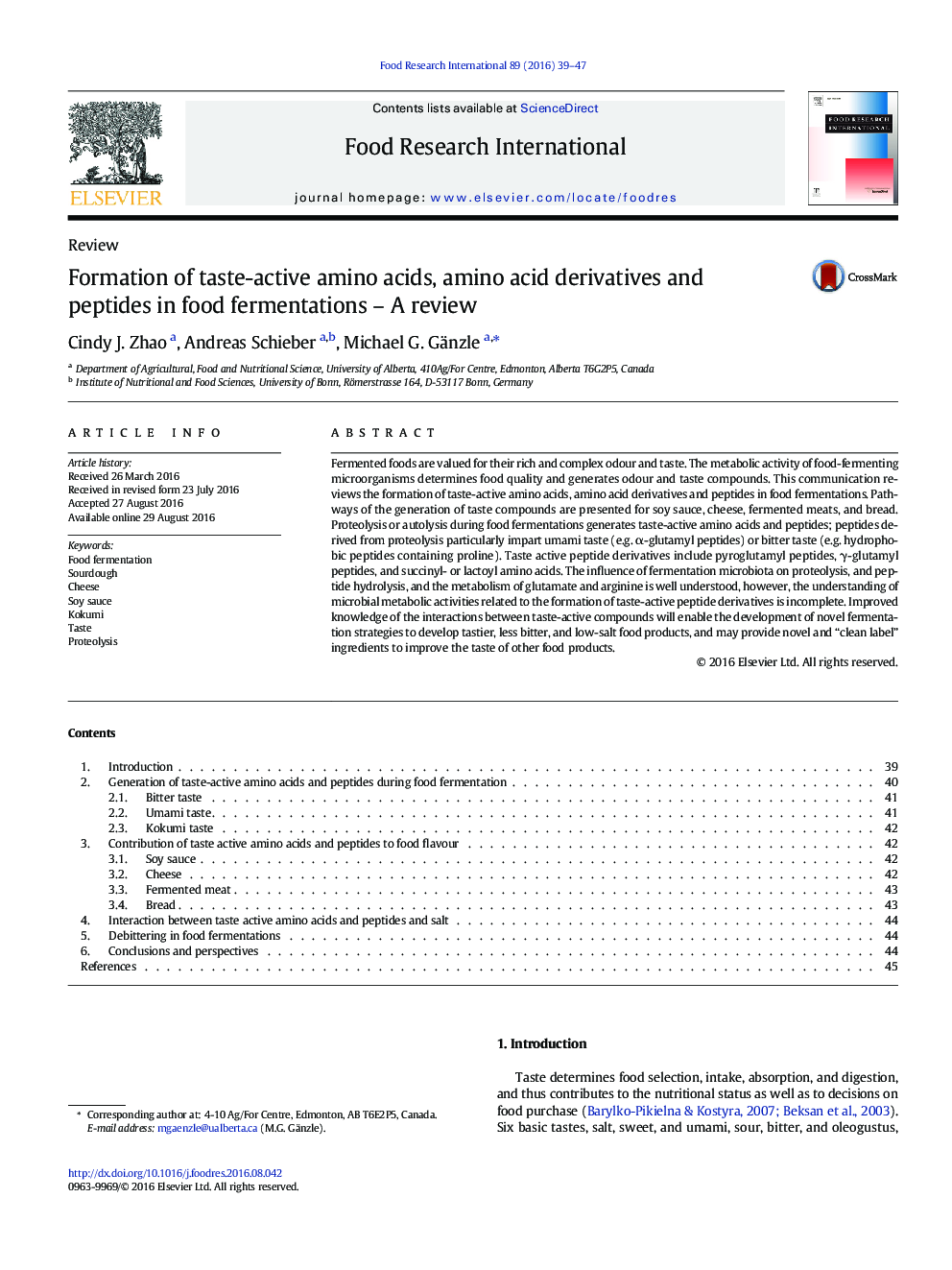| کد مقاله | کد نشریه | سال انتشار | مقاله انگلیسی | نسخه تمام متن |
|---|---|---|---|---|
| 6394704 | 1330629 | 2016 | 9 صفحه PDF | دانلود رایگان |
- Amino acids and peptides contribute to the taste of fermented foods.
- Peptides or amino acids impart sweet, umami, or bitter taste.
- Peptide derivatives contribute to taste and kokumi activity.
- Peptide derivatives include γ-glutamyl peptides and pyroglutamate peptides.
Fermented foods are valued for their rich and complex odour and taste. The metabolic activity of food-fermenting microorganisms determines food quality and generates odour and taste compounds. This communication reviews the formation of taste-active amino acids, amino acid derivatives and peptides in food fermentations. Pathways of the generation of taste compounds are presented for soy sauce, cheese, fermented meats, and bread. Proteolysis or autolysis during food fermentations generates taste-active amino acids and peptides; peptides derived from proteolysis particularly impart umami taste (e.g. α-glutamyl peptides) or bitter taste (e.g. hydrophobic peptides containing proline). Taste active peptide derivatives include pyroglutamyl peptides, γ-glutamyl peptides, and succinyl- or lactoyl amino acids. The influence of fermentation microbiota on proteolysis, and peptide hydrolysis, and the metabolism of glutamate and arginine is well understood, however, the understanding of microbial metabolic activities related to the formation of taste-active peptide derivatives is incomplete. Improved knowledge of the interactions between taste-active compounds will enable the development of novel fermentation strategies to develop tastier, less bitter, and low-salt food products, and may provide novel and “clean label” ingredients to improve the taste of other food products.
Overview on the generation of taste compounds from proteins during food fermentation. Proteolysis generates taste active peptides and amino acids; glutathione reductase generates the kokum-active glutathione. Enzymatic conversions to taste active derivatives were proposed to be catalysed by lactoyl-transferase [2], succinyl transferase [3], pyroglutamyl cyclase [4], or by γ-glutamyl-transferase [5]. Maillard/Amadori products [6] are formed by chemical conversion during heating.124
Journal: Food Research International - Volume 89, Part 1, November 2016, Pages 39-47
